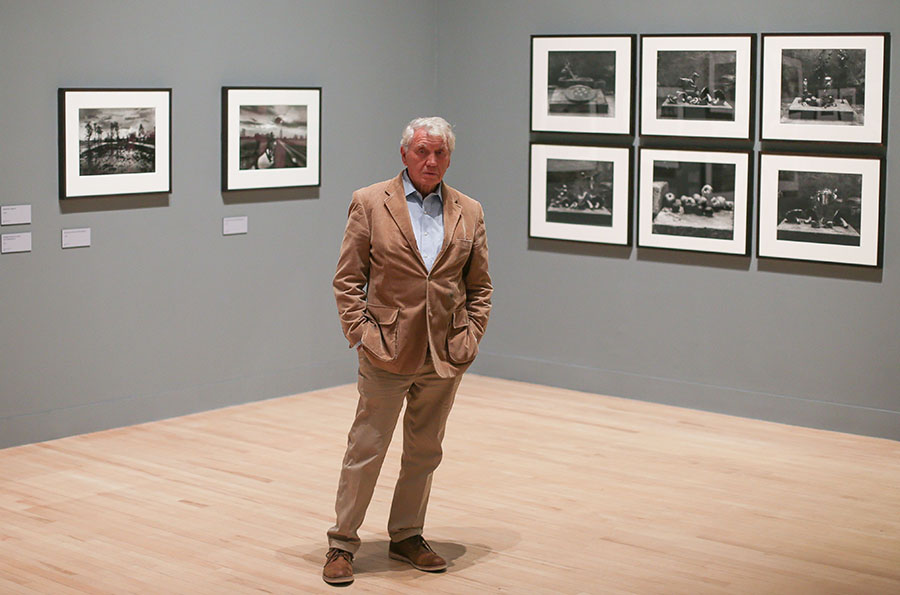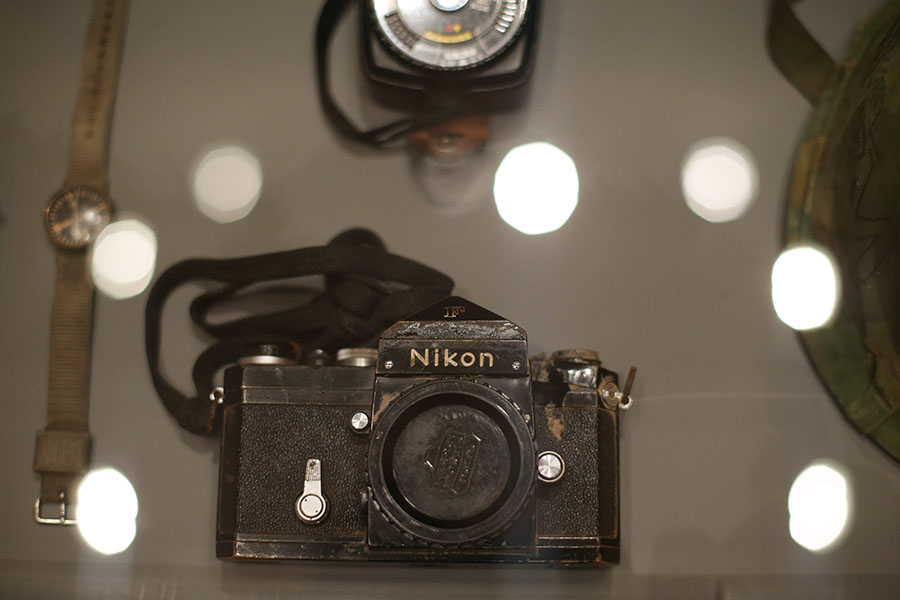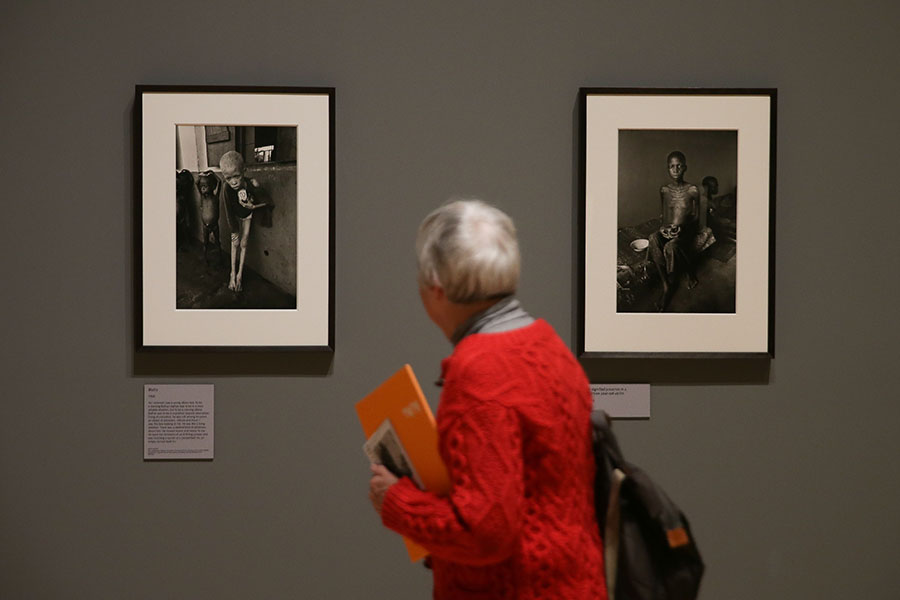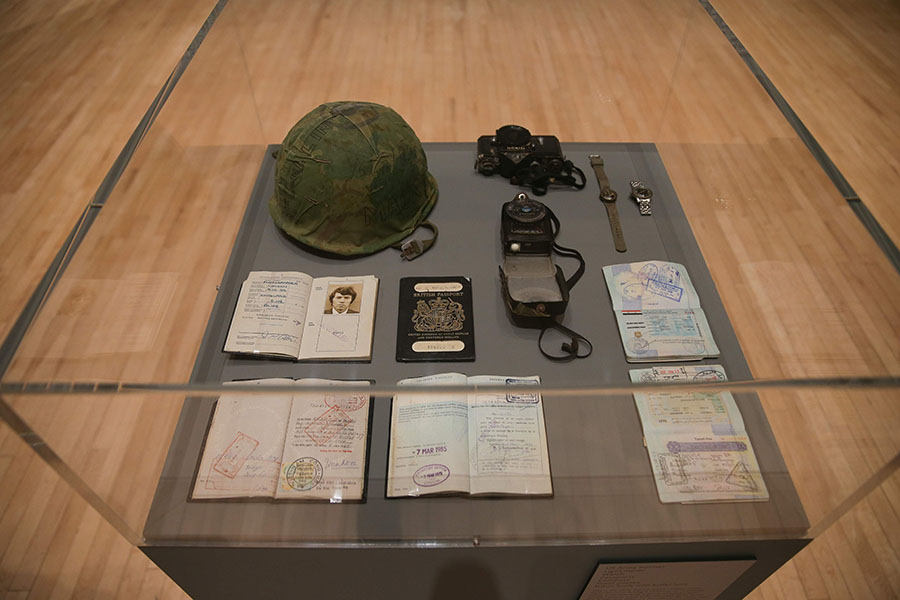PARIS: A woman weeps helplessly in a street in Cyprus, her hands clasped together in desperate prayer; a shellshocked US marine in Vietnam, his face blackened, stares vacantly; a starving, stick-thin albino child in Biafra, hunched over, clutches an empty tin.
These are some of Don McCullin's most iconic photographs, among thousands that have provided an unflinching visual record of some of the most harrowing conflicts of the 20th century.
The photographer, who is being honoured with a retrospective at Tate Britain opening this week, was named by Harper's Magazine as "our era's greatest living war photographer".
He is "the Goya of war photography," it said, echoing a comparison made by renowned photographer Henri Cartier-Bresson.
The bleakness of McCullin's job was offset by his belief that his images could act as some bulwark against the world´s forgetting or denying difficult events.
"Because there were photographs, you can't pretend that we didn't know that these things happened," McCullin said in 2013, quoted in The New York Times.
He wanted to show the eyes of his subjects, "the eyes that are all telling, and the eyes that are all accusing," he said in a BBC interview in 2015.

Bad start
Don McCullin was born on October 9, 1935, in north London. His father worked occasionally as a fishmonger, but mostly he was an invalid.
"It was a place of ignorance, bigotry, poverty and violence," McCullin told The Guardian in 2005, referring to his Finsbury Park neighbourhood.
"We were a family of five living in two basement rooms of a tenement block with no indoor loo."
He was a teenager when his father died and family responsibilities fell on his shoulders, so he left school and gave up an art college scholarship.
"I had a bad start which turned out to be the place to start from in life because it taught me about poverty and misery and unhappiness and all those things which I later encountered in countless occasions on battlefields, hospitals and places of awful tragedies," he told The Economist in 2010.

Life-changing Sunday
McCullin worked in railway dining cars and at an animation studio before doing his national service with the Royal Air Force, where he was a photography assistant.
When he returned to Finsbury Park and the animation studio, he had a little camera bought with all his savings.
In a derelict building at the end of his street on a Sunday afternoon in 1958, McCullin pictured -- in one of his first images -- a violent neighbourhood gang known as "The Guvnors", its members in dark suits and with slicked-back hair.
"That one picture changed my life," McCullin said in his 1992 autobiography "Unreasonable Behaviour".
It was printed in The Observer in 1959 and resulted in a run of photojournalism offers.

Deep wounds
McCullin went on to cover many of the world's conflicts and tragedies including Cyprus, the Congo, Lebanon's Sabra and Shatila, Northern Ireland's "Troubles", Iraq's wars, famine in Africa, the AIDS crisis.
He spent prolonged spells at British newspapers, notably The Observer and The Sunday Times.
From it all, he has not emerged unscathed.
"He has been shot and badly wounded in Cambodia, imprisoned in Uganda, expelled from Vietnam and had a bounty on his head in Lebanon," says the biography on his official website.
"Sometimes it felt like I was carrying pieces of human flesh back home with me, not negatives. It´s as if you are carrying the suffering of the people you have photographed," he says on the website of London´s Hamilton Gallery, which represents him.
"You sleep with the dead, you cradle the dead, you live with the living who become the dead," he wrote in the autobiography.

Photos with a purpose
In later years, McCullin retreated to his home in Somerset with his third wife and their child, his fifth.
He continued to take photos. "The Landscape" published in 2018 takes his English surroundings as his subject -- bucolic, serene, but still shot in stark black and white, like all his work.
In 2017, he was honoured with a knighthood.
"I took photographs which are about human beings suffering and I wanted you to look at those photographs and I wanted you to try and persuade yourself even if you didn´t want to look at them that they had a purpose," he told The Economist in 2010.


